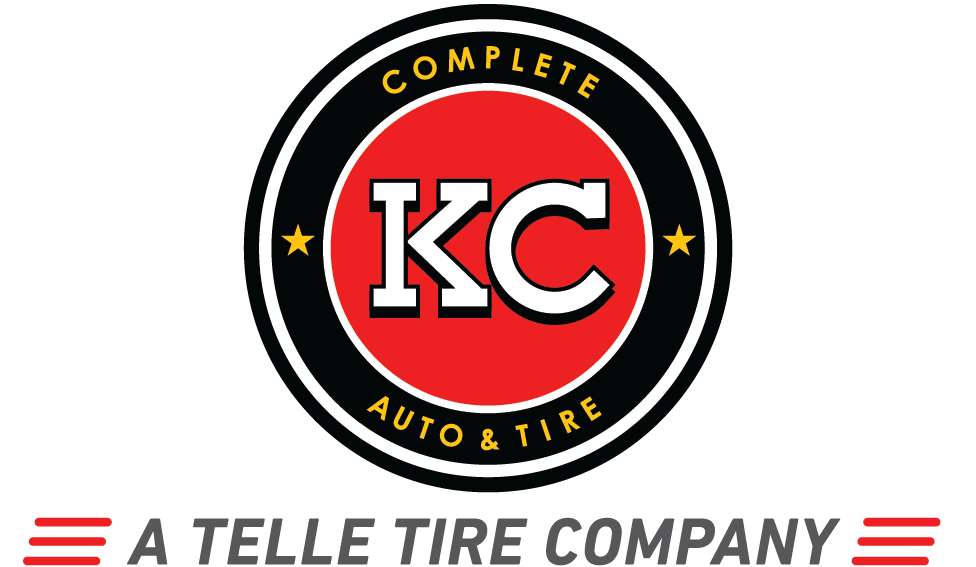
TPMS Sensor Replacement & Repair at Telle Tire
Your vehicle’s Tire Pressure Monitoring System (TPMS) is your first line of defense against under-inflated tires that can affect safety, fuel economy, and performance. Whether your TPMS dashboard light is on or your sensor needs replacing, Telle Tire & Auto Centers has the tools, training, and trusted technicians to restore confidence to your drive.
What is a TPMS Sensor & Why Does it Matter
A TPMS sensor is a small device installed in each tire that continuously monitors air pressure in real-time. When tire pressure drops too low or becomes inconsistent, the sensor triggers a warning light on your dashboard to alert you to the issue. Here’s why it matters:
- Safety: Maintaining the correct tire pressure ensures proper traction, braking distance, and stability, especially in emergency situations or on wet roads.
- Fuel Efficiency: Under-inflated tires create more rolling resistance, forcing your engine to work harder and burn more fuel.
- Tire Longevity: Improper pressure causes uneven wear, shortening the lifespan of your tires and increasing the need for replacements.
- Vehicle Handling: A well-calibrated TPMS supports smoother rides, better steering response, and improved performance in all driving conditions.
Signs Your TPMS Sensor Needs Service
A faulty TPMS sensor can compromise your vehicle’s safety systems without you even realizing it. Here are some common warning signs that it’s time to take it to Telle Tire for TPMS sensor replacement or service:
- TPMS warning light stays on or flashes
- Incorrect pressure readings on your dashboard display
- TPMS light comes on after a tire rotation or replacement
- Frequent low tire pressure alerts despite proper inflation
- Tire pressure inconsistencies between tires
Warning Light on the Dashboard
You’ll typically see the TPMS warning light on your dashboard. The symbol resembles a flat tire with an exclamation mark at its center. If it’s flashing or staying lit, it’s time to bring your vehicle in for a check.
Inaccurate Tire Pressure Readings
If your display shows inconsistent or wrong tire pressure levels, the sensor may be failing or miscommunicating with your vehicle’s monitoring system.
Battery Life Expiration
Each TPMS sensor has a built-in battery that usually lasts 7 to 10 years. Once the battery dies, the entire sensor must be replaced. Our technicians can test battery health and recommend the appropriate solution for your specific situation.
TPMS Services at Telle Tire
At Telle Tire, our technicians specialize in fast, accurate TPMS sensor repair and replacement. We offer comprehensive services that get to the root of the problem for a quick, effective resolution. From recalibration to full sensor swaps, we’re here to keep your tires and your ride in top condition.
Our TPMS services include:
- TPMS Sensor Inspection
- Battery and Sensor Replacement (if needed)
- System Reset and Calibration
- Pressure Check and Tire Inspection
- Full Safety Check to Ensure Reliable Monitoring
Since 1942, we’ve kept families safe on the road. When you take it to Telle, you’re getting:
- Expert service from ASE-certified technicians
- Honest assessments with no surprise upsells
- Convenient locations across Missouri
- Transparent pricing and dependable turnaround times
Comprehensive Diagnostics
Not sure if the TPMS is the problem? Our technicians will perform a comprehensive diagnostic exam to determine whether your issue is sensor-related or part of a broader concern involving the tire or electronic system.
Sensor Replacement & Reprogramming
Every vehicle make and model is a little different. Our team will source the correct TPMS sensor and reprogram it to match your vehicle’s specific requirements, ensuring precise and dependable performance.
TPMS Service Warranty for Worry-Free Driving
Your vehicle is a big investment. When you need repairs, you deserve to know that the parts and the labor are built to last. That’s why Telle Tire & Auto Centers offers one of the most comprehensive extended warranties in the industry.
Most TPMS repairs or replacements are covered by our 3-year/30,000-mile warranty, protecting both the parts and our labor.
Why do we go the extra mile to offer a better car repair warranty? You never know what lies on the road ahead, but we know you shouldn’t have to worry about it. After all, that’s our job.

